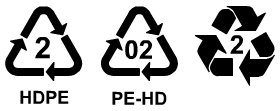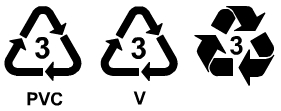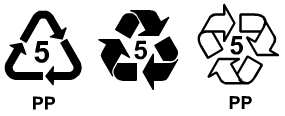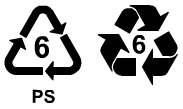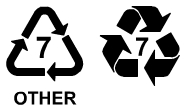Introduction
The main ingredients of plastics are the elements hydrogen and carbon. The hydrocarbons used to create plastics are most often obtained from fossil fuels such as crude oil and coal, both of which are finite resources, i.e. there is a limited amount and once it is all used, there is no more.
Plastics are used to make millions of tons of products each year. Some plastic products are used for years, others such as plastic packages and carrier bags are often used only once before they are discarded.
This creates millions of tons of plastic waste each year, most of which is non-biodegradable and remains intact for very long periods of time, littering the environment and filling land fill sites.
What is recycling?
Recycling is a strategy used to sustain our use of plastics and to reduce environmental pollution.
"Recycling plastics" is the process of reusing plastics to make new products. The plastics recycling process involves the following stages:

The Mobius Loop
 |
|
The Mobius Loop is the universal symbol used to identify a product that may be recycled. The three arrows represent stages in recycling.
The first arrow represents collection of plastic waste, cleaning and sorting into the various types, i.e. all the high density polyethylene (HDPE) products together, all the polystyrene (PS) products together etc. |
The second arrow represents the next stage in recycling, which is reprocessing waste plastic and using the material to make new products.
This involves cutting waste products into smaller pieces, then:
- using the plastic bits to charge plastic moulding machines, e.g. injection and extrusion moulding machines, which are used to make new products, or
- feeding the plastic pieces into an extruder, extruding plastic rods and cutting the rods into short lengths called pellets, then using the pellets as feed stock in plastics moulding machines, which are used to make new products.
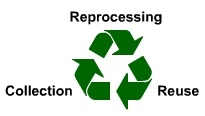 |
|
The third arrow represents the last stage in recycling which is reuse, i.e. the newly formed plastic products, made from recycled plastic, must be used.
If there is no demand for products made from recycled plastics, then there is not much point in recycling them. |
Reasons why we should recycle plastics
By recycling plastics we reduce the amount of:
- crude oil used to make plastic products
- energy used to convert oil into polymers
- carbon dioxide (CO2) emissions and other waste gases produced during the conversion of oil into polymers
- plastic waste littering the countryside and in land fill sites.
|
|
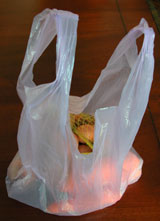
Grocery bag - used only once.
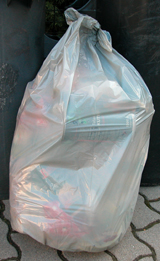 Plastic rubbish bags - used only once. Plastic rubbish bags - used only once.
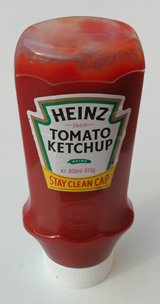 Plastic ketchup bottle - used once for a short period. Plastic ketchup bottle - used once for a short period.
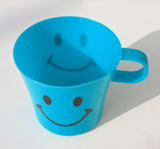 Plastic cup - used many times, may be used for years. Plastic cup - used many times, may be used for years.
|






 Plastic rubbish bags - used only once.
Plastic rubbish bags - used only once. Plastic ketchup bottle - used once for a short period.
Plastic ketchup bottle - used once for a short period. Plastic cup - used many times, may be used for years.
Plastic cup - used many times, may be used for years.

